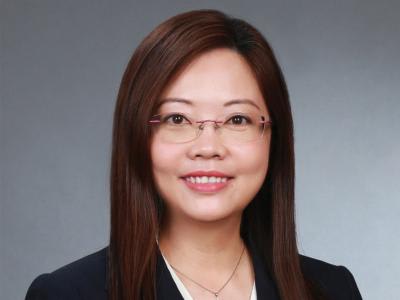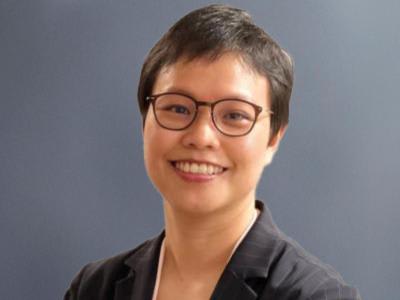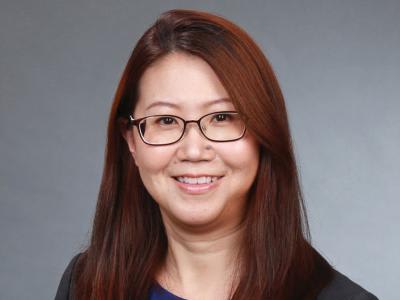Following the announcement made in the Singapore Budget 2024, the Monetary Authority of Singapore (“MAS”) issued a Circular on 1 October 2024 announcing the extension and revision of the tax incentive schemes conditions for funds under Sections 13D, 13O and 13U of the Income Tax Act 1947 of Singapore (collectively referred hereinafter as the “Tax Incentive Schemes”). These Schemes offer tax exemption, subject to meeting the requisite conditions, for income and gains derived by funds managed by Singapore-based fund managers.
A new tax incentive scheme under Section 13OA was proposed for funds structured as Singapore limited partnerships. An elective option was also introduced to provide greater tax certainty for closed-end funds which typically face declining assets under management and reduced local business spending when they divest in the latter part of their fixed lifespans.
Extension of the Tax Incentive Schemes
- The Tax Incentive Schemes due to expire by the end of 2024 are extended to 31 December 2029.
- Similarly, the Goods and Services Tax remission and withholding tax exemption for funds enjoying the Tax Incentive Schemes will continue to apply until 31 December 2029.
Revision of economic criteria for Sections 13O and 13U schemes
The following changes to the economic criteria for the Sections 13O and 13U schemes will take effect from 1 January 2025.
Section 13O | Section 13U | |||||||||
| Assets under Management (“AUM”) | Minimum of SGD5 million invested in Designated Investments (“DI”) at the end of every financial year (“FY”). [Current: No minimum AUM requirement.] | Minimum of SGD50 million invested in DI at the point of application and at the end of every FY. [Current: Minimum AUM of SGD50 million at the point of application.] | ||||||||
| Investment Professionals ("IPs") | The Fund Manager (“FMC”) employs at least two IPs who are tax resident in Singapore, each earning more than SGD3,500 per month and must engage substantially in the qualifying activity. [Current: No minimum number of IPs stipulated.] | The FMC employs at least three IPs who are tax resident in Singapore, each earning more than SGD3,500 per month and must engage substantially in the qualifying activity. [Current: Same as stated above. No revision to current position.] | ||||||||
| Local Business Spending ("LBS") | A tiered-LBS requirement pegged to the AUM size was introduced.
[Current: Total business spending of SGD200,000 for a Section 13O fund and SGD200,000 LBS for a Section 13U fund.] | |||||||||
Grace periods to transition to the revised economic criteria
Existing Sections 13O and 13U Tax Incentive Schemes commencing prior to 1 January 2025
Existing funds with Section 13O awards commencing prior to 1 January 2025 are only required to fulfil the updated economic criteria relating to AUM, IPs and tiered-LBS in each FY from FY ending in 2027 i.e. Year of Assessment (“YA”) 2028 (inclusive).
Section 13U funds with awards commencing prior to 1 January 2025 are only required to fulfil the AUM in DI and tiered-LBS requirements in each FY with effect from FY ending 2027 (YA 2028) (inclusive).
Existing funds however must continue to meet the SGD200,000 minimum total business spending (for Section 13O funds) and SGD200,000 minimum local business spending and the three IPs requirements (for Section 13U funds) for FYs prior to FY 2027 to avail for the Sections 13O and 13U tax incentives for YA2027 and prior.
New Section 13O awards commencing between 1 January 2025 and FY ending in 2026
For funds with Section 13O awards commencing in the period between 1 January 2025 and FY ending in 2026 (YA 2027), they are required to fulfil:
- SGD5 million of AUM in DI requirement by the end of the third year of the incentive and in every FY thereafter; and
- minimum two IPs and the tiered-LBS requirements from FY ending in 2027 (YA 2028) (inclusive).
New Section 13O awards commencing in FY ending in or after 2027
New Section 13O funds with awards commencing in FY ending in 2027 onwards are required to fulfil:
- SGD5 million AUM in DI requirement by the end of the third year of the incentive and in every FY thereafter; and
- minimum two IPs and the tiered-LBS requirements from the first year of the incentive.
New Section 13U awards commencing on or after 1 January 2025
There is no grace period granted in respect of fresh Section 13U applications lodged with MAS from 1 January 2025. As at the date of the tax incentive application, applicants must meet all the existing and updated conditions of the scheme, which include the following:
- The SGD50 million minimum of AUM in DI requirement must be met at the point of application and maintained as at the end of each FY.
- Must fulfil the tiered-LBS requirement for each FY.
Introduction of new Section 13OA scheme
- A new tax incentive scheme under Section 13OA was proposed to take effect from 1 January 2025 for funds which are constituted as limited partnerships in Singapore.
- All the existing conditions (including the 30/50 rule) of Section 13O scheme and the updated requirements in relation to AUM in DI, IPs and tiered-LBS together with the associated grace periods for their implementation also apply to a Section 13OA fund.
- The tax incentive conditions are not applied at each partner level but at the limited partnership fund level instead.
- A partner of the limited partnership which has been awarded the Section 13OA scheme may enjoy tax exemption on his share of the income and gains in respect of DI derived by the approved Section 13OA fund.
Changes to Section 13D scheme
- The Section 13D scheme remains as a self-administered scheme.
- To ensure that Section 13D funds have a minimum level of economic substance in Singapore, they must be managed or advised directly by a FMC in Singapore, with the employment of at least one investment professional in each FY.
- Existing Section 13D funds generally will have a two-year grace period to fulfil the IP headcount requirement, i.e. to take effect from FY ending in 2027 (YA 2028).
“Closed-end fund” treatment as an option for Section 13O, 13OA or 13U applicants
In recognition that closed-end funds may have declining AUM and LBS as they divest in the latter part of their fixed lifespan and to provide greater tax certainty, funds applying for Section 13O, 13OA or 13U tax incentive scheme may, with effect from 1 January 2025, make an irrevocable election for the “closed-end fund” treatment at the point of the tax incentive application.
Existing funds that wish to opt for this “closed-end fund” treatment will be allowed to make this election also but they would need to revoke their existing incentive award and make a fresh application.
The key features and benefits in opting for the “closed-end fund” treatment are summarised below.
| Annual AUM requirement | Annual AUM requirement only needs to be met from the fund’s first to the fifth incentive year (inclusive) and will be waived from the sixth incentive year onwards. |
| Annual LBS condition | The annual LBS condition will have to be met on a cumulative basis up to the tenth incentive year (inclusive) and will be waived from the eleventh incentive year onwards. |
| Revocation of the tax incentive award | The fund is required to have its Section 13O, 13OA or 13U tax incentive award revoked with effect from the end of its divestment phase or the day immediately after its 20th incentive year, whichever is earlier. |
Other changes taking effect from 1 January 2025
- Generally the AUM of a fund is computed currently as the net asset value of the fund. To simplify the computation of AUM with effect from 1 January 2025, the AUM of a fund shall refer to the value of investments held by the fund that qualify as DI.
- A newly set-up company requirement for Section 13O scheme will be removed. Following from this, funds applying for Section 13O scheme will no longer be restricted from making investments prior to filing their tax incentive application with MAS.
- Effective from YA 2025, the 30/50 rule for investors of Sections 13D, 13O and 13OA funds which are trusts and unit trusts incentivised under the Section 13D scheme is removed.
- The additional minimum AUM and LBS requirements in respect of a special purpose vehicle (“SPV”) and/or trading feeder fund for Section 13U fund structures will be removed. This significant enhancement allows such fund structures to meet only a single set of economic criteria collectively, as opposed to on a multiple-fold basis, regardless of the number of SPVs or trading feeders the master fund has. The relaxation accords greater flexibility for such a structure to meet the revised economic criteria. Furthermore, it may encourage the setup of SPVs in Singapore for the holding of underlying investments. This in turn creates economic spin-off for Singapore.
- MAS approval for changes to the investment objective and strategy for funds will no longer be required. Funds however should continue to update MAS for their information on any such changes.
- MAS has clarified that real estate investment funds constituted in any form are/will be included in the list of DI.
Key takeaways
Considering the revised economic criteria, which also apply to existing funds granted with the Tax Incentive Schemes prior to 1 January 2025, it is important for fund managers to review and assess how the changes would affect the funds that they are managing, the funds’ eligibility to continue to enjoy their tax exemption status, especially after the expiry of the grace period, and take the appropriate measures where necessary.
For new funds which are about to apply for the Section 13U scheme, it is critical to assess whether they can meet the revised economic criteria, in particular the prescribed minimum AUM requirements in DI at the end of every financial year. The options for consideration may include the application for Section 13O/Section 13OA scheme instead and/or opting for the “closed-end fund” treatment, if relevant.




